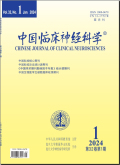Myasthenia gravis with thymomas: treatment and prognosis
Objective to evaluate the treatments and prognostie factots of myasthenia gravis(MG) with thymomas. Methods: Our study was based on 103 cases of MG with surgically proved thymomas We analysis the subtypes of MG, the types and invasiveness of thymoma and evaluated the long-term effective rate and survival rate Ossermarl degree of MG has been scored as following Grade I :19(18.4%):ⅡA:15(14.6%);ⅡB:48(46.6%):Ⅲ11(10.7%); Ⅳ:8(7.8%). There were 50 patients with lymphocytic predominant 23 the mixed 29 the epithelial predominant I spinal cell thymoma Stage was classified as suggested by Masaoka as following Stage I 57 cases(55.3%). Ⅱ cases(22.3%). Ⅲ 21 cases(20.4%). Ⅳ 2 cases(1.9%)。 Seventy-six patients were administered with steroids (dexamethasone or prednisone). Seven patients were administered with chemothecapy with cyclophosphamide 59 patients were received radiation therapy to the mediastinum as postopenative treatment or beforee opetation. Results: Eighty-one patients with Masaoka Ⅰ and Ⅱ stages fifteen patients with Ⅲ stage were resected totally. 5 patits were with stage Ⅲ and Ⅳ resected subtotally and 2 patients with stage m received only biopsy. The symptoms of MG were improved in 69 patients postopentively exacerbated in 26 (18 cases with myasthenia crisis), unchanged in 5 and sppcared postoperatively in 2 cases. One casc died of operative complications. The rates of postoperative myasthenia cnsis were 13/46(28.3%) in 1970s and 1980s and 5/57(8.8%) in 1990s. local relapse occurred in 9 of 103 (8.7%)of patients liwenty three patients obtained complete remission (22.3%), 26 pharmacological remission (25.2%), 13 marked improvement(12.6%), 19 improvement (18.4%), 4 no change (3.9%) and 18 death (17.5%). The overall effective rate was 78.6%. The overall survival rates were 77.8% and 48.5% at 5 and 10 years respectively Among the three lustologie types, the surviaval rates at 5 years of 10 years of lymphyocytie thymoma were 88.9% and 72.7% respectively mixed thymoma 83.3% and 5835, epithelial thymoma 55.6% and 10.0%. The turvival rates of stage Ⅰ and Ⅱ were 89.8% and 76.2% cespectively at 5 and 10 years, stage Ⅲ and Ⅳ were 35.7% and 0%, The survival rates of patients received radiotherapy were 80% and 44.4% respectively The tumors of two cases only biopsy and two cases recurrented were reduced after radiation, Conclusions: the symptoms of MG in patients accompanied with thymoma were alleviated in most cases after openation. Some of them exacerbated even myasthenia ctisis. With the improverents of anesthesia and perioperative managements the postopetative myasthenia crisis was reduced. The use of corticosteroids. radotherapy and chemotherapy enhanced the long term curative effects in the patients of MG with thymoma But patients with epithelial thymoma and stage Ⅲ and Ⅳ had the worst protnosis.
survival rates、complete remission、radiation therapy、myasthenia gravis
8
S79;R5
2005-07-07(万方平台首次上网日期,不代表论文的发表时间)
共1页
88








